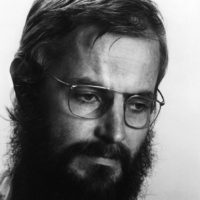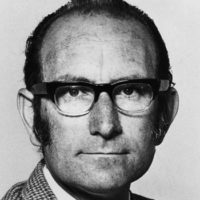
Georges J.F. Köhler
Basel Institute of Immunology

César Milstein
Medical Research Council, Cambridge, England

Michael Potter
National Cancer Institute, National Institutes of Health
For fundamental research into the genetics of immunoglobulin molecules, paving the way for the development of hybridomas.
Michael Potter
Dr. Potter’s work has centered on the plasma cell, a form of white blood cell, which acts as the antibody factory for the immune system. The first of his profoundly important discoveries came in 1956, when he found that adjuvants containing mineral oil could cause plasma cell malignancies, or plasmacytomas, in mice. These tumors can be transplanted among mice or grown indefinitely in the laboratory, and are the equivalent of multiple myeloma in humans. This experimental model of human disease has become a keystone of immunological research around the world. Dr. Potter identified immunoglobulins, which bind to specific antigens, making it possible to analyze the structure and the binding properties of antibodies.
Dr. Potter’s catalytic influence on the field of antibody research has extended far beyond his own laboratory through his generous sharing of materials, cell lines, information, and creative ideas.
To Dr. Potter, for his elegant studies of plasma cell tumors, leading to the development of monoclonal antibodies and enlarging our knowledge of carcinogenesis and the immune system, this 1984 Albert Lasker Basic Medical Research Award is given.
For creating the first hybridomas, a powerful new scientific tool for producing monoclonal antibodies.
Georges Köhler
As a 28-year-old postdoctoral scientist, Dr. Köhler joined the laboratory of Dr. César Milstein, where he developed the idea that a new kind of hybrid cell could be designed to make antibodies to any specific antigen. Dr. Milstein recognized the value of the novel concept and, with Dr. Köhler, entered a scientific collaboration of monumental importance.
In 1974, Dr. Köhler sensitized mice with an antigen and fused their plasma cells with mouse spleen myeloma cells, thereby creating the first hybridomas. Each hybridoma inherited the myeloma cell’s ability to grow indefinitely in culture, and the plasma cell’s capacity to synthesize antibodies to the specific antigen. Each hybridoma produces infinite copies of its own particular antibody.
Since Dr. Köhler and Dr. Milstein first described their method of making monoclonal antibodies, every area of biomedical investigation has benefited. Monoclonal antibodies to any antigen can be made by sensitizing an animal, fusing its plasma cells with myeloma cells to make hybridomas, and screening the hybridoma in culture. Scientists can obtain monoclonal antibodies in whatever amounts are needed.
Dr. Köhler subsequently developed a new myeloma cell especially for hybridoma work. This SB-2-Zero cell secretes no protein of its own, but can follow the genetic directions of the sensitized plasma cell. Dr. Köhler has thus significantly enhanced monoclonal antibody research.
To Dr. Köhler, for his brilliant achievements in fusing plasma cells and myeloma cells to form hybridomas, thus providing a pure and limitless source of monoclonal antibodies, this 1984 Albert Lasker Basic Medical Research Award is given.
César Milstein
Dr. Milstein, a pioneer in the study of the structure and function of antibodies and the genes that govern their production, demonstrated that two plasmacytoma cells, each secreting a different antibody, could be fused to form a hybrid cell that produced both antibodies.
In the intellectually stimulating atmosphere of Dr. Milstein’s laboratory, his young associate, Dr. Georges Köhler, speculated that homogeneous, or monoclonal, antibodies could be made by a new kind of hybrid cell. The two scientists pursued the problem in a seamless collaboration, each contributing original ideas and fostering the creative thinking of the other.
In 1975, Dr. Milstein and Dr. Köhler announced that the hybridomas they had made by fusing sensitized plasma cells with mouse myeloma cells produced an endless stream of pure monoclonal antibodies.
Scientists around the world have hailed this discovery, which is clearly one of the greatest biological advances of the century.
Monoclonal antibodies are used as precise probes for identifying cells and molecules and for mapping their structures. Chemically linked to drugs, radioisotopes, and staining materials, they are used experimentally to treat cancer and other diseases, and to make specific cells and tissues visible. Monoclonal antibodies are vital to the development of new vaccines for diseases such as herpes, hepatitis, malaria, and human T-cell leukemia. They are also used in preparing biologic materials, including interferon, growth factors, and hormones.
